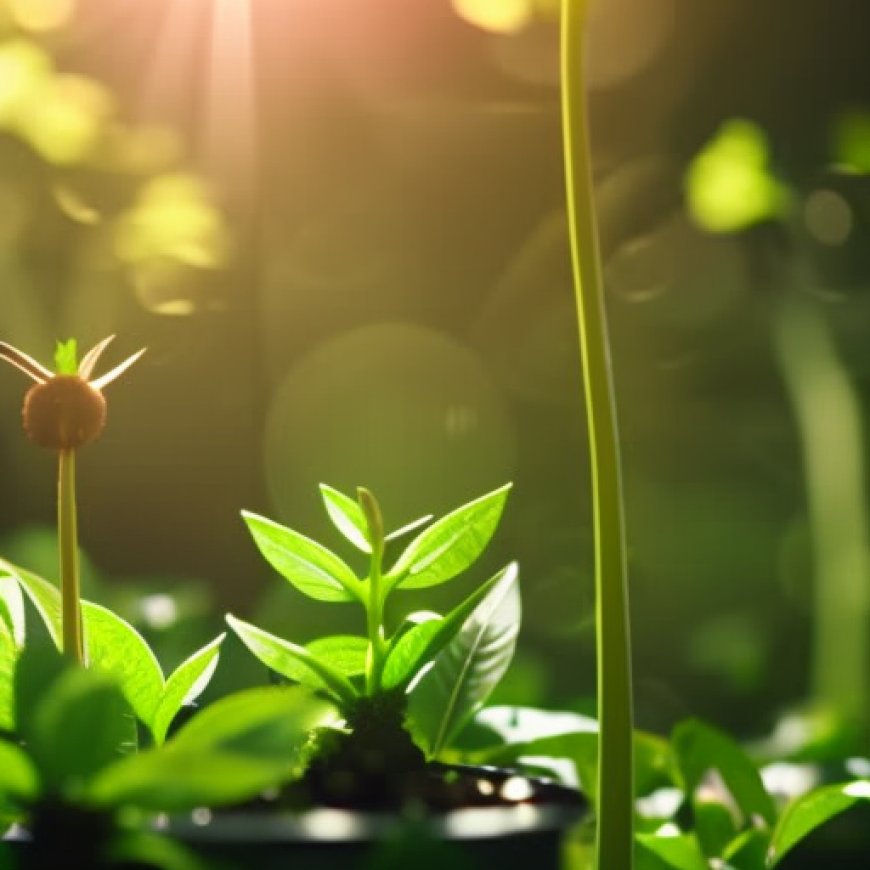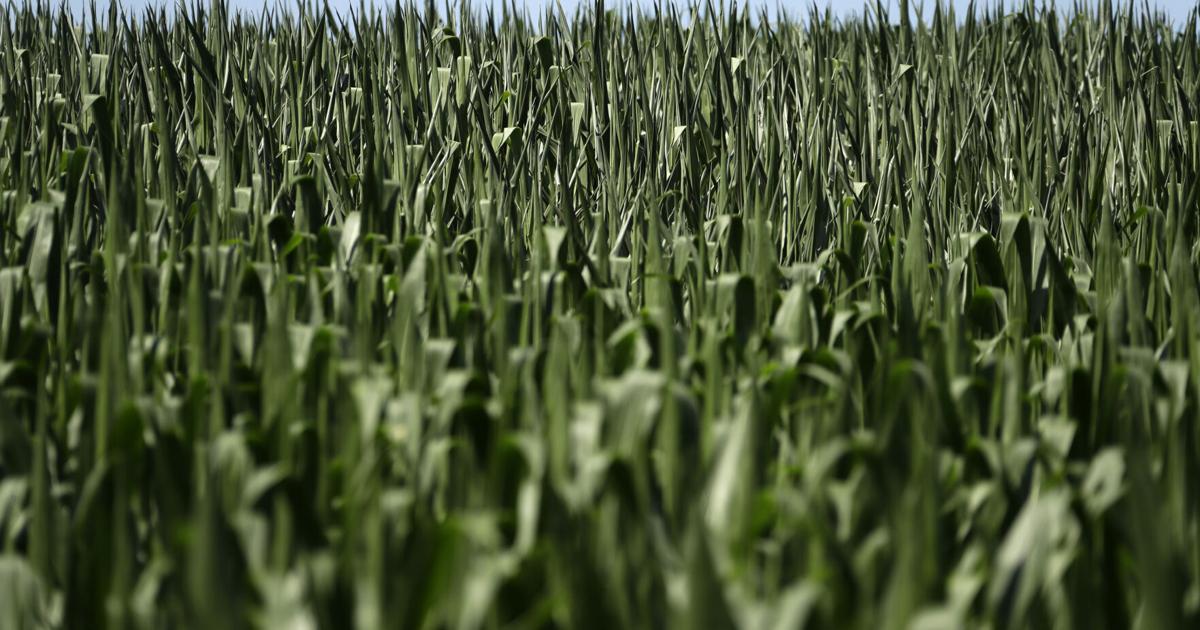Carbon dioxide helps plants grow. That doesn’t mean more of it is good for the planet
Carbon dioxide helps plants grow. That doesn't mean more of it is ... Berkshire Eagle


Carbon Dioxide and Crop Growth: Separating Fact from Fiction

CLAIM: Carbon dioxide is good for crop growth, so efforts to remove it from the atmosphere will destroy the planet.
THE FACTS: Excess carbon dioxide does increase growth in some crops, but it also decreases their nutritional value and has other negative impacts on the planet, such as increasing droughts and fires through climate change. Overall, the negatives of more CO2 far outweigh any benefits, experts say. But a video circulating online is misrepresenting research around the issue in an attempt to discredit efforts to tackle rising carbon emissions.
Misrepresentation of Research
In the video, a narrator points to a 2022 story from NPR titled “Stopping climate change could mean sucking carbon from the air.” He then shows a clip from a natural gas company that supplies supplementary carbon dioxide to greenhouses to help grow tomatoes and highlights a line from a study published by The Lancet in 2019, reading: “Higher CO2 concentrations increase photosynthesis in C3 plants (eg, wheat, rice, potatoes, barley), which can increase crop yields.”
“So if we suck all the carbon out of the air, we’re almost going to destroy the planet. Because these plants need carbon dioxide in order to grow,” the narrator concludes. But experts — including the authors of the study cited — say this is a fallacy. For starters, scientists are not seeking to remove “all” CO2 from the air, just to bring it down to earlier levels and keep it from increasing so rapidly.
The Importance of Sustainable Development Goals (SDGs)
Efforts to tackle rising carbon emissions are aligned with the Sustainable Development Goals (SDGs) set by the United Nations. These goals aim to address climate change, reduce poverty, and ensure food security for all. By reducing carbon dioxide levels and mitigating climate change, we can create a more sustainable future that benefits both people and the planet.
The Trade-Off: Crop Growth vs. Nutritional Value
Additionally, the video misrepresents the benefits of increased carbon dioxide to some plants by ignoring the downsides. The key point of the Lancet study was that while a higher concentration of carbon dioxide did increase growth in 85 percent of plants, it ultimately lowered their nutritional value — which is not a worthwhile trade-off for the planet — said Kristie Ebi, a co-author of the study and a professor of global health at the University of Washington’s Center for Health and the Global Environment.
“There’s about 830 million people in the world who are food insecure. There’s about 2 billion that are micronutrient deficient,” Ebi said. The clip of tomatoes being grown in a greenhouse in the video on social media is a controlled environment where temperature, water, and nutrients are optimized for plant growth, but it’s more complicated in outside crop fields, experts explained.
The Negative Impacts of Climate Change
More importantly, the increasing amount of heat-trapping carbon dioxide and other greenhouse gases being released by humans into the atmosphere has led to climate change, which has all sorts of other negative impacts on the planet that vastly outweigh any benefits from higher crop yields.
“Heatwaves, droughts, forest fires as we see raging now, and all these other impacts associated with climate change would impact society much more than you would see benefits from slightly higher carbon now,” said Jonas Jagermeyr, an associate research scientist at Columbia University’s Center for Climate Systems Research who also studies food security at the NASA Goddard Institute for Space Studies.
— Associated Press writer Karena Phan in Los Angeles contributed this report.
SDGs, Targets, and Indicators Analysis
1. Which SDGs are addressed or connected to the issues highlighted in the article?
- SDG 2: Zero Hunger
- SDG 13: Climate Action
- SDG 15: Life on Land
The article discusses the impact of carbon dioxide on crop growth and the negative consequences of increased CO2 levels on the planet, such as climate change. These issues are directly connected to SDG 2, which aims to end hunger, and SDG 13, which focuses on taking urgent action to combat climate change. Additionally, the article mentions the negative impacts of CO2 on the planet, including droughts and fires, which are relevant to SDG 15, which aims to protect and restore ecosystems and promote sustainable use of terrestrial ecosystems.
2. What specific targets under those SDGs can be identified based on the article’s content?
- SDG 2.4: By 2030, ensure sustainable food production systems and implement resilient agricultural practices that increase productivity and production.
- SDG 13.2: Integrate climate change measures into national policies, strategies, and planning.
- SDG 15.1: By 2020, ensure the conservation, restoration, and sustainable use of terrestrial and inland freshwater ecosystems and their services.
Based on the article’s content, the specific targets that can be identified are related to sustainable food production systems (SDG 2.4), integrating climate change measures into policies (SDG 13.2), and ensuring the conservation and sustainable use of terrestrial ecosystems (SDG 15.1).
3. Are there any indicators mentioned or implied in the article that can be used to measure progress towards the identified targets?
- Indicator 2.4.1: Proportion of agricultural area under productive and sustainable agriculture.
- Indicator 13.2.1: Number of countries that have integrated climate change measures into national policies, strategies, and planning.
- Indicator 15.1.1: Forest area as a proportion of total land area.
The article does not explicitly mention indicators, but based on the identified targets, indicators such as the proportion of agricultural area under sustainable agriculture (Indicator 2.4.1), the number of countries integrating climate change measures into policies (Indicator 13.2.1), and the forest area as a proportion of total land area (Indicator 15.1.1) can be used to measure progress towards the identified targets.
SDGs, Targets, and Indicators Table
| SDGs | Targets | Indicators |
|---|---|---|
| SDG 2: Zero Hunger | 2.4: By 2030, ensure sustainable food production systems and implement resilient agricultural practices that increase productivity and production. | 2.4.1: Proportion of agricultural area under productive and sustainable agriculture. |
| SDG 13: Climate Action | 13.2: Integrate climate change measures into national policies, strategies, and planning. | 13.2.1: Number of countries that have integrated climate change measures into national policies, strategies, and planning. |
| SDG 15: Life on Land | 15.1: By 2020, ensure the conservation, restoration, and sustainable use of terrestrial and inland freshwater ecosystems and their services. | 15.1.1: Forest area as a proportion of total land area. |
Behold! This splendid article springs forth from the wellspring of knowledge, shaped by a wondrous proprietary AI technology that delved into a vast ocean of data, illuminating the path towards the Sustainable Development Goals. Remember that all rights are reserved by SDG Investors LLC, empowering us to champion progress together.
Source: berkshireeagle.com

Join us, as fellow seekers of change, on a transformative journey at https://sdgtalks.ai/welcome, where you can become a member and actively contribute to shaping a brighter future.







